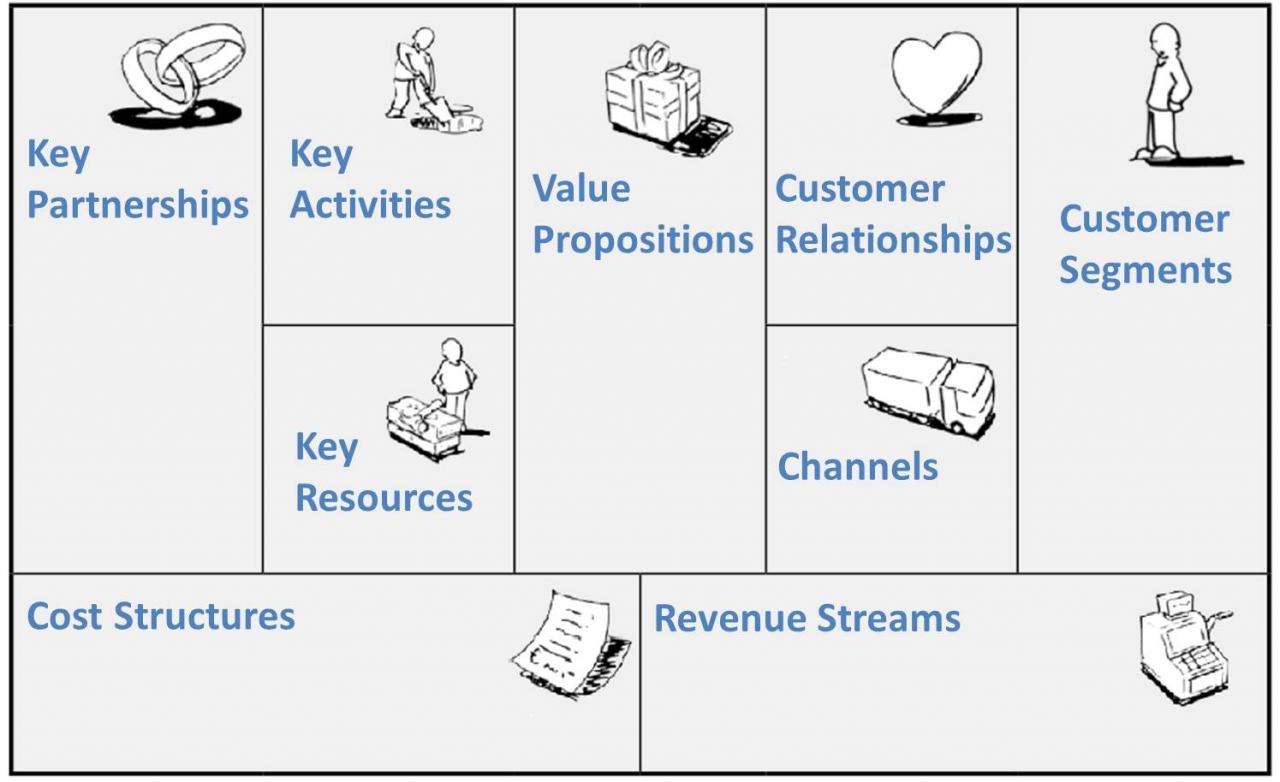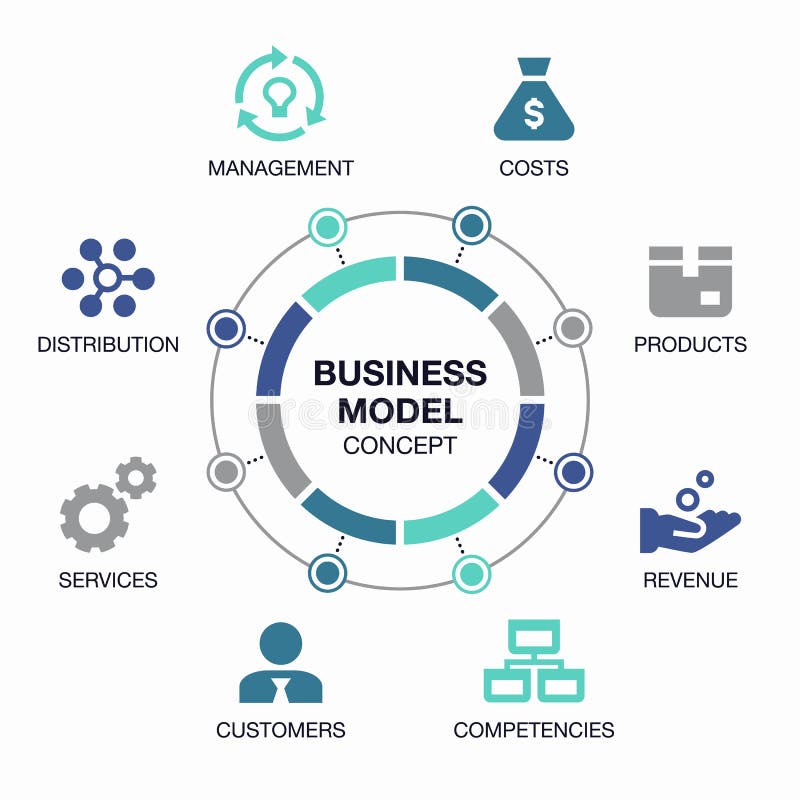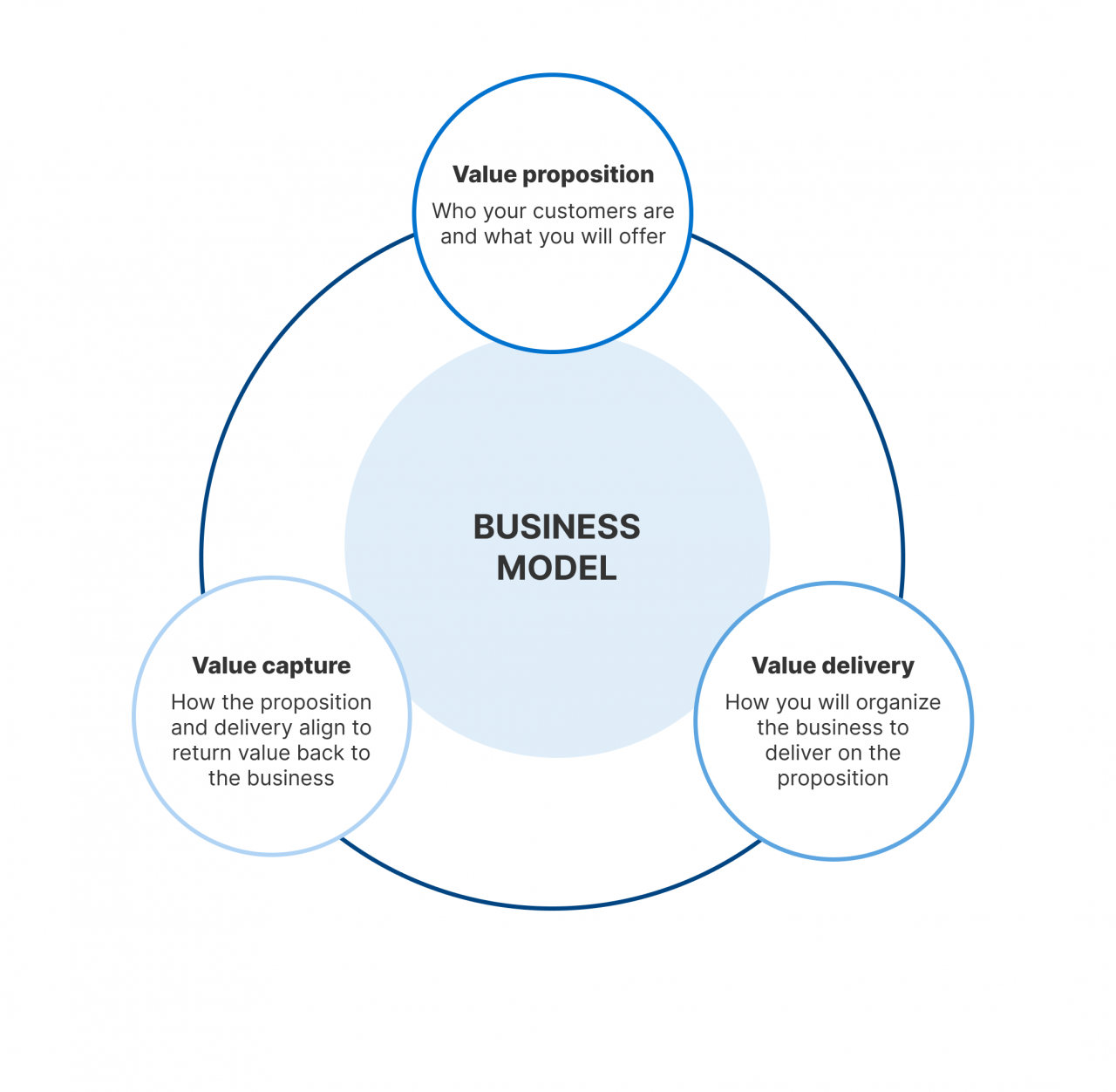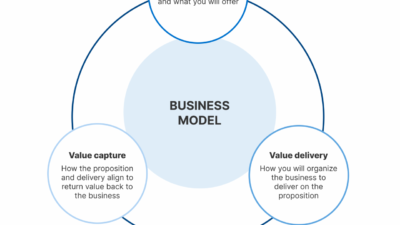Building a sustainable business model for long-term success isn’t just a trend; it’s the future of responsible enterprise. This journey requires a deep dive into environmental, social, and economic considerations, weaving them seamlessly into your core business strategy. From crafting innovative revenue streams that prioritize both profit and planet to fostering a culture of transparency and accountability, we’ll explore the key elements needed to build a business that thrives ethically and sustainably.
We’ll examine various frameworks for measuring sustainability, analyze the pros and cons of different revenue models like subscriptions and impact investing, and delve into practical strategies for minimizing waste and maximizing resource efficiency. We’ll also discuss the importance of building a strong brand that resonates with conscious consumers and adapting your business to navigate the ever-changing landscape of sustainability and market demands.
Get ready to build a business that not only succeeds but also makes a positive impact on the world.
Defining Sustainability in a Business Context
Sustainability isn’t just a buzzword; it’s a fundamental shift in how businesses operate, aiming for long-term value creation without compromising the planet or society. It’s about building a resilient and responsible enterprise that thrives alongside its environment and community. This involves a holistic approach that integrates environmental, social, and economic considerations into every aspect of the business model.The core of sustainable business practices rests on the three pillars of sustainability: environmental, social, and economic.
These pillars are intrinsically linked; neglecting one weakens the others, ultimately undermining the business’s long-term viability. A strong environmental commitment, for example, can lead to cost savings through resource efficiency (economic pillar), while also enhancing the company’s reputation and attracting socially conscious consumers (social pillar).
The Three Pillars of Sustainability and Their Interconnections
Environmental sustainability focuses on minimizing a business’s negative impact on the environment. This includes reducing carbon emissions, conserving water and energy, minimizing waste, and sourcing sustainable materials. Social sustainability emphasizes fair labor practices, ethical sourcing, community engagement, and promoting diversity and inclusion within the workplace and supply chain. Economic sustainability focuses on creating long-term economic value while ensuring financial stability and profitability.
It involves efficient resource management, responsible investment, and fair pricing strategies. The interconnectedness is evident: ethical sourcing (social) can lead to higher-quality materials (environmental) resulting in improved product quality and profitability (economic).
Examples of Sustainable Business Practices
Many businesses are successfully integrating sustainability into their core operations. Patagonia, for example, is renowned for its commitment to environmental sustainability, using recycled materials, reducing its carbon footprint, and actively advocating for environmental protection. Their commitment extends to fair labor practices and community engagement, showcasing the interconnectedness of the three pillars. Unilever, through its Sustainable Living Plan, focuses on improving the health and well-being of consumers, reducing its environmental impact, and enhancing its social impact across its global operations.
This demonstrates a large-scale integration of sustainability across various aspects of their business. Similarly, Interface, a flooring company, has committed to eliminating its negative environmental impact through innovative product designs and sustainable manufacturing processes.
Frameworks for Assessing Business Sustainability, Building a sustainable business model for long-term success
Several frameworks exist to help businesses assess and improve their sustainability performance. B Corp certification is a rigorous standard that evaluates a company’s social and environmental performance, accountability, and transparency. Companies achieving B Corp certification demonstrate a strong commitment to sustainability and meet high standards across various aspects of their operations. The Global Reporting Initiative (GRI) standards provide a widely accepted framework for reporting on a company’s environmental, social, and economic performance.
Using GRI standards allows businesses to transparently communicate their sustainability efforts to stakeholders, fostering accountability and driving continuous improvement. These frameworks, among others, provide a structured approach to measuring and improving sustainability performance, enhancing a company’s credibility and attractiveness to investors and consumers alike.
Identifying Sustainable Revenue Streams

Building a sustainable business requires more than just a great product or service; it demands a robust and enduring revenue model. A truly sustainable business needs revenue streams that not only generate profit but also align with its environmental and social goals. This means carefully considering the long-term implications of each revenue source and ensuring its compatibility with the overall sustainability vision.
Diversification is key to mitigating risk and ensuring resilience in the face of market fluctuations.
Building a sustainable business model requires a long-term vision, and a crucial component of that vision is smart marketing. A well-defined marketing strategy is essential for consistent growth, and that’s where learning how to developing a successful marketing plan for small business growth comes in. Ultimately, effective marketing isn’t just about short-term gains; it’s about building brand loyalty and securing a sustainable future for your business.
Let’s explore diverse revenue models designed for long-term viability, analyzing their strengths and weaknesses in the context of a sustainable business. We’ll also compare the profitability of sustainable models against their traditional counterparts.
Three Diverse Revenue Models for a Sustainable Business
Here are three distinct revenue models suitable for a hypothetical sustainable business focused on producing ethically sourced and sustainably packaged coffee:
- Direct-to-consumer subscription boxes: Customers subscribe to receive regular deliveries of freshly roasted coffee beans, accompanied by brewing guides and information about the coffee’s origin and the farmers who grew it. This fosters brand loyalty and provides predictable recurring revenue.
- Wholesale partnerships with ethically-minded retailers: Partnering with cafes, grocery stores, and other businesses that share the company’s values allows for expansion into a wider market. This model leverages existing distribution networks and increases brand visibility.
- Impact investing partnerships: Securing investment from organizations focused on sustainable and ethical businesses provides capital for growth while aligning the company with investors who share its mission. This can unlock significant funding opportunities and accelerate expansion.
Advantages and Disadvantages of Different Revenue Models
Each revenue model presents unique advantages and disadvantages:
- Subscription Models: Advantages: Predictable recurring revenue, increased customer loyalty, opportunity for upselling and cross-selling. Disadvantages: High customer acquisition cost, reliance on consistent customer retention, potential for churn.
- Freemium Models: Advantages: Low barrier to entry, potential for viral growth, ability to identify high-value customers. Disadvantages: Difficult to balance free and paid offerings, potential for low conversion rates, requires significant marketing investment. (Note: A freemium model might involve offering a small amount of free coffee samples with a purchase or providing access to basic brewing information online, while premium features or larger quantities of coffee would be paid).
- Impact Investing: Advantages: Access to capital aligned with the company’s mission, increased credibility and brand reputation, potential for long-term partnerships. Disadvantages: Potential for investor influence on business decisions, stricter reporting requirements, may involve giving up equity.
Profitability Comparison: Traditional vs. Sustainable Business Models
Comparing profitability directly requires specific data from individual companies, which is not available here. However, a general comparison can illustrate key differences.
| Model Type | Revenue Source | Advantages | Disadvantages |
|---|---|---|---|
| Traditional Coffee Roaster | Wholesale to large retailers, high-volume sales | High sales volume, economies of scale, established distribution channels | Lower profit margins, potential for ethical concerns (e.g., unsustainable sourcing), dependence on fluctuating commodity prices |
| Sustainable Coffee Roaster (Subscription Model) | Direct-to-consumer subscriptions, premium pricing | Higher profit margins, strong customer loyalty, positive brand image | Higher customer acquisition costs, reliance on consistent customer retention, potentially lower sales volume initially |
Resource Management and Efficiency

Building a sustainable business isn’t just about ethical sourcing; it’s about optimizing how you use resources. A lean, efficient operation translates directly to lower costs, reduced environmental impact, and a stronger brand reputation. This section dives into practical strategies for minimizing waste and maximizing resource efficiency, showcasing how a circular economy can be a game-changer.
Implementing resource-efficient practices requires a holistic approach, encompassing everything from raw material sourcing to waste disposal. By adopting a proactive, data-driven strategy, businesses can significantly reduce their environmental footprint while improving profitability.
Strategies for Minimizing Waste and Maximizing Resource Efficiency
Effective resource management involves a multi-pronged approach, targeting waste reduction at every stage of the business process. The following strategies offer a roadmap to operational excellence and environmental responsibility.
- Process Optimization: Streamlining workflows to eliminate unnecessary steps, reduce material consumption, and minimize energy use. This might involve investing in automation, improving production techniques, or adopting lean manufacturing principles.
- Waste Audits and Reduction Programs: Conducting regular waste audits to identify areas for improvement. This data-driven approach helps pinpoint specific waste streams and allows for targeted interventions, such as implementing recycling programs, composting initiatives, or waste-to-energy solutions.
- Sustainable Sourcing: Prioritizing suppliers committed to sustainable practices. This includes sourcing materials from recycled sources, opting for sustainably harvested resources, and collaborating with suppliers who share the company’s commitment to environmental responsibility.
- Energy Efficiency Upgrades: Investing in energy-efficient equipment and technologies, such as LED lighting, high-efficiency motors, and smart building management systems. Implementing energy conservation measures, such as reducing heating and cooling needs, can also significantly reduce energy consumption.
- Water Conservation: Implementing water-saving technologies and practices throughout the business. This might involve installing low-flow fixtures, optimizing irrigation systems, or implementing water recycling programs.
Circular Economy Implementation in the Fashion Industry
The fashion industry is notorious for its wastefulness. However, the circular economy offers a powerful model for transforming this sector. By focusing on extending the life cycle of garments, reducing textile waste, and promoting sustainable materials, the industry can significantly reduce its environmental impact.
One example is the rise of clothing rental services, allowing consumers to access a wider variety of garments without the need for frequent purchases. Another approach is the development of clothing made from recycled materials, such as recycled cotton or polyester from plastic bottles. Companies are also investing in innovative technologies to improve the recyclability of clothing, including chemical recycling methods that break down textile fibers to their building blocks, allowing for the creation of new garments.
Key Performance Indicators (KPIs) for Resource Management
Measuring the effectiveness of resource management strategies requires a robust set of KPIs. These metrics provide quantifiable data on environmental and social impact, allowing for continuous improvement and informed decision-making.
| KPI | Description | Measurement |
|---|---|---|
| Waste Diversion Rate | Percentage of waste diverted from landfills through recycling, composting, or other means. | (Total waste diverted)/(Total waste generated) – 100% |
| Water Consumption per Unit Produced | Amount of water used to produce one unit of output. | Total water consumption / Total units produced |
| Energy Consumption per Unit Produced | Amount of energy used to produce one unit of output. | Total energy consumption / Total units produced |
| Greenhouse Gas Emissions per Unit Produced | Amount of greenhouse gases emitted during production. | Total GHG emissions / Total units produced |
| Material Usage Efficiency | Ratio of output to input materials. | (Total output)/(Total input materials) |
Building a Strong Brand and Stakeholder Engagement

Building a sustainable business isn’t just about eco-friendly practices; it’s about building a brand that resonates with consumers who value ethical and responsible business operations. A strong brand, built on transparency and engagement, is crucial for long-term success in the increasingly conscious marketplace. This involves not only attracting customers but also fostering strong relationships with employees, investors, and the wider community.A sustainable brand narrative goes beyond simply stating commitment; it requires consistent action and demonstrable results.
Building a sustainable business model requires strategic thinking, encompassing every aspect of operations. A crucial element is optimizing your workforce, and for many, that means mastering the art of remote team management. Check out this guide on how to effectively manage a remote team and boost productivity to unlock significant efficiency gains. Ultimately, a productive remote team contributes directly to a robust, long-term business model, ensuring sustainable growth and profitability.
This section will explore how to craft a compelling marketing campaign showcasing sustainability, build trust through transparency, and cultivate a culture of responsibility within the workforce.
Marketing Campaigns Highlighting Sustainability
Imagine “Evergreen Apparel,” a fictional company producing clothing from recycled materials. Their marketing campaign could center around a visually compelling story showcasing the lifecycle of their products: from sourcing recycled fabrics to the manufacturing process emphasizing low-water usage and ethical labor practices, culminating in the final product’s durability and style. The campaign could feature videos showcasing the recycling process, interviews with workers, and testimonials from satisfied customers.
This multi-faceted approach goes beyond mere advertising; it provides transparency and builds trust, fostering a deeper connection with the consumer. Evergreen Apparel could also partner with environmental organizations, further reinforcing their commitment and reaching a wider audience. This collaborative approach adds credibility and extends their reach to consumers already engaged with sustainable initiatives.
Transparency and Accountability in Building Trust
Transparency and accountability are the cornerstones of building trust with consumers and stakeholders. For Evergreen Apparel, this means publicly disclosing their supply chain, including details about their sourcing, manufacturing processes, and labor practices. Regularly published sustainability reports, independently verified where possible, demonstrate a commitment to truthfulness. Openly addressing challenges and setbacks, rather than trying to hide them, also builds credibility.
Consumers appreciate honesty and authenticity; it fosters a sense of shared responsibility and strengthens the brand’s reputation. For example, if Evergreen Apparel experiences a delay in sourcing a particular recycled material, they should communicate this openly to their customers, explaining the reason and outlining their plan to mitigate future issues.
Employee Engagement in Sustainable Business Practices
Engaging employees is crucial for embedding sustainability into the company culture. Evergreen Apparel could implement internal sustainability initiatives, such as employee-led recycling programs, workshops on reducing energy consumption, and opportunities for employees to participate in community clean-up projects. Regular internal communication highlighting the company’s sustainability progress and achievements keeps employees informed and motivated. Incentivizing employees for their contributions to sustainability initiatives, through rewards or recognition programs, further reinforces their commitment.
Furthermore, providing employees with training on sustainable practices equips them with the knowledge and skills to contribute effectively. This holistic approach fosters a culture of responsibility, making sustainability a shared value across the entire organization. This not only improves environmental performance but also enhances employee morale and fosters a sense of pride in their work.
Adaptability and Resilience in a Changing Market

The path to long-term success for any sustainable business isn’t paved with unchanging stability; it’s a dynamic journey requiring constant adaptation. Climate change and shifting consumer preferences present both formidable challenges and exciting opportunities, demanding businesses to be agile and resilient in the face of uncertainty. Successfully navigating this evolving landscape necessitates a proactive approach, embracing change as a catalyst for innovation rather than a threat to survival.The increasing urgency of climate change is reshaping consumer behavior, creating a surge in demand for eco-friendly products and services.
Simultaneously, evolving social consciousness is pushing businesses to adopt more ethical and responsible practices across their operations. Ignoring these trends is no longer an option; it’s a recipe for obsolescence. Companies that proactively integrate sustainability into their core strategies are not only mitigating risks but also unlocking new avenues for growth and competitive advantage.
Climate Change Impacts and Consumer Preferences
Climate change presents a complex array of challenges for businesses. Extreme weather events, resource scarcity, and stricter environmental regulations all impact supply chains, production costs, and operational efficiency. For example, a prolonged drought could severely impact agricultural businesses relying on water-intensive crops, necessitating diversification or the adoption of drought-resistant alternatives. Conversely, the growing awareness of climate change has fueled a powerful consumer movement towards sustainable products.
Consumers are increasingly willing to pay a premium for goods and services produced with minimal environmental impact, creating a market opportunity for businesses that prioritize sustainability. Patagonia, for instance, has successfully leveraged its commitment to environmental responsibility to build a strong brand identity and attract a loyal customer base. Their commitment to using recycled materials and advocating for environmental protection resonates deeply with environmentally conscious consumers.
Successful Adaptation Strategies
Several businesses have successfully adapted their models to address environmental and social pressures. Unilever, for example, has implemented a Sustainable Living Plan, focusing on reducing its environmental footprint while improving the lives of millions. This involved transitioning to sustainable sourcing practices, reducing waste, and promoting healthier lifestyles through its product offerings. Similarly, Interface, a flooring manufacturer, has adopted a closed-loop system, aiming to eliminate waste and reuse materials throughout its production process.
This innovative approach has not only minimized its environmental impact but also reduced costs and enhanced its brand reputation.
Contingency Planning for Sustainable Businesses
A robust contingency plan is crucial for sustainable businesses to mitigate risks associated with supply chain disruptions or regulatory changes. This plan should include:
- Diversified Sourcing: Relying on a single supplier exposes a business to significant risk. Diversifying sourcing across multiple suppliers, geographically dispersed, reduces vulnerability to disruptions. This could involve sourcing materials from different regions or exploring alternative materials altogether.
- Supply Chain Transparency: Complete transparency in the supply chain allows for proactive identification and mitigation of risks. This involves mapping the entire supply chain, understanding the environmental and social impacts at each stage, and developing mechanisms to monitor and address potential issues.
- Regulatory Compliance Monitoring: Staying informed about evolving environmental and social regulations is crucial. Businesses should actively monitor changes in legislation and proactively adapt their practices to maintain compliance. This might involve investing in new technologies or implementing new processes to meet stricter standards.
- Scenario Planning: Developing scenarios that anticipate potential disruptions, such as natural disasters or geopolitical instability, allows businesses to prepare proactive responses. This could include developing backup plans for sourcing, production, and distribution.
A well-defined contingency plan, coupled with a commitment to continuous improvement, is vital for ensuring the long-term viability and success of a sustainable business in an ever-changing world.
Measuring and Reporting on Sustainability Performance: Building A Sustainable Business Model For Long-term Success
Building a truly sustainable business isn’t just about good intentions; it requires concrete measurement and transparent reporting. Understanding your environmental and social impact allows for continuous improvement and builds trust with stakeholders. This section explores effective methods for tracking progress and communicating your sustainability performance.Tracking and measuring the environmental and social impact of a business involves a multi-faceted approach.
It’s not just about reducing carbon emissions; it encompasses the entire lifecycle of your operations, from sourcing materials to product disposal. This requires a robust system for data collection, analysis, and reporting.
Environmental Impact Measurement Methods
Effective environmental impact measurement requires a combination of quantitative and qualitative data. Quantitative data might include metrics like energy consumption (kWh), water usage (gallons), waste generated (tons), and greenhouse gas emissions (tons of CO2e). Qualitative data could involve assessments of supply chain sustainability, biodiversity impact, and compliance with environmental regulations. For example, a coffee roaster could track their energy consumption per pound of coffee roasted, their water usage in the cleaning process, and the amount of compostable packaging used.
They could also assess the sustainability practices of their coffee bean suppliers.
Social Impact Measurement Methods
Measuring social impact involves assessing the business’s influence on its employees, community, and wider society. Key metrics could include employee satisfaction scores, diversity and inclusion statistics, fair labor practices adherence, community investment, and product safety. For instance, a clothing company could track employee turnover rates, the percentage of women in leadership positions, and the number of hours of community service provided by employees.
They could also conduct surveys to gauge community perception of their operations.
Sustainability Reporting Frameworks and Best Practices
Several frameworks provide structure and guidance for sustainability reporting. The Global Reporting Initiative (GRI) Standards are widely recognized, offering a comprehensive set of indicators covering economic, environmental, and social performance. The Sustainability Accounting Standards Board (SASB) focuses on material sustainability issues that impact financial performance. The Carbon Disclosure Project (CDP) focuses specifically on climate change-related disclosures. Best practices include setting clear targets, using standardized metrics, ensuring data accuracy, and engaging external assurance providers to verify reported information.
Key Metrics and Interrelationships: A Hypothetical Sustainable Business
Imagine a hypothetical sustainable clothing company, “EcoThreads.” Their key metrics might include:* Material Sourcing: Percentage of organic cotton used (environmental impact, social responsibility – fair trade practices).
Energy Consumption
Kilowatt-hours of renewable energy used per garment produced (environmental impact).
Water Usage
Gallons of water used per garment produced (environmental impact).
Waste Generation
Tons of textile waste diverted from landfills (environmental impact).
Employee Satisfaction
Employee satisfaction scores (social impact).
Fair Labor Practices
Percentage of suppliers adhering to fair labor standards (social impact).
Product Durability
Average lifespan of garments (environmental impact, economic impact – reduced consumer spending).These metrics are interconnected. For example, increased use of organic cotton (Material Sourcing) reduces environmental impact and supports fair labor practices (Social Impact). Similarly, higher product durability (Product Durability) decreases waste generation (Waste Generation) and reduces the overall environmental footprint. By tracking these metrics and their relationships, EcoThreads can identify areas for improvement and demonstrate their commitment to sustainability.


